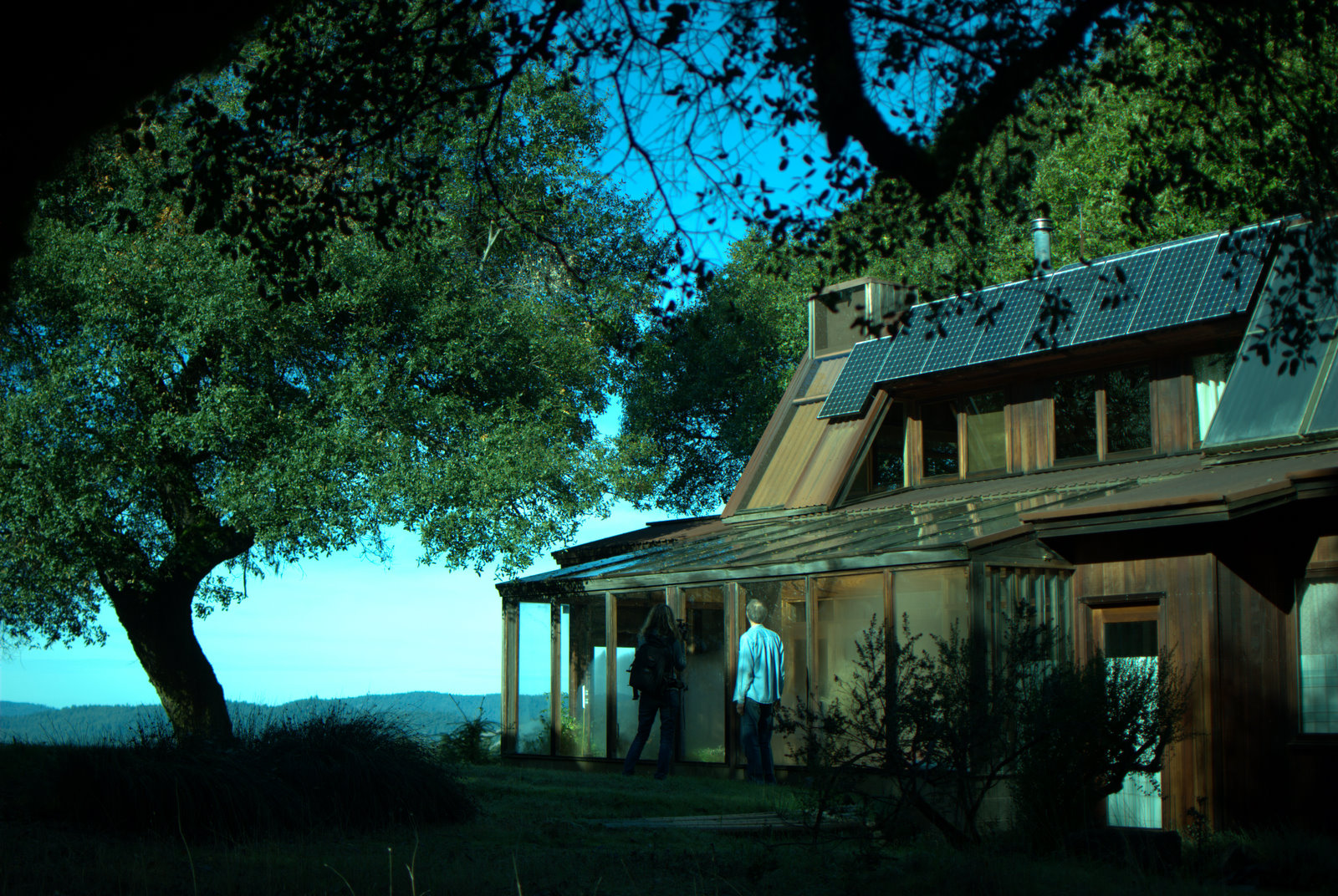Collaborative matter
RC4_Theory_Literature Review 15/01/2021
RC4_Theory_Literature Review 15/01/2021
Santiago del Águila
The Bartlett School of Architecture_MArch Architectural Design
The Bartlett School of Architecture_MArch Architectural Design
By our own means.
With the birth of the Internet and the proliferation in the second half of the 20th century of globalisation and financial capitalism, there has been a buildup of tension stretching capitalism and society. Even more so, sparks of this tension or dare I say the momentum of change has been more evident and potentially disruptive than ever from the 21st century onwards, with the mass adoption of personal Internet devises. The dot-com bubble is an excellent example to mention two points: The first being the progressive dissolution of currency as the product labour resulted from productive social endeavours, evolving to become increasingly influenced by accumulation and speculation.1. The second is the proliferation of technology that integrates into society the accessibility to investment products, merging capitalism mechanisms with everyday life, producing a global society tied to consumer and service driven markets. Though scary and challenging in some aspects, also these trends bring along the creative tools to subvert them as this mega connectivity and technological boom happens through devices that fit in one's pocket. This same hardware can bypass consumer use and become truly independent and personal, letting us choose how we behave in this environment. Some challenges worth mentioning could be, the concentration of wealth and intellectual property or privacy breaches and monopolistic data use. Nevertheless, this digital revolution is going both ways, vertically in a traditional capital-consumer relationship and horizontally, as we are increasingly connected and collaborative as individuals throughout the same digital platforms. We must realise that there is a convergence of the product and the consumer taking place as the digital platforms blurring the line between consumers and creators.2.
Redirecting this concerns to the architectural profession, mainly occupied in the physical plane articulating contrasting elements such as the public/private or labour/capital. As the responsible actants of designing the physical planes of interaction, what should be architecture’s concern in an increasingly digital-driven world? What is the bond that can be found between people in the increasingly abstract work environment of the city? How can we challenge an environment driven on the abstraction of financial capital growth and intellectual capital? 3. Supposing the web’s vastness presents itself as the epicentre of human alienation through extreme concentration information and consumer services. Must the built environment protect the user from appropriative bidding over their cognitive labour and personal data? If open-access, open-source or the deep web are some of the back doors to bypass abusive practices and appropriation, building what could be a commons counterpart to the commercial internet. How does this collaboration, data sharing and body of knowledge; translate to new forms of physical interaction, space sharing and resource creation towards community building? A collaboration that is especially relevant in the domestic environment as the technology to collect data, then distribute and use it, is increasingly accessible and mainstream to use.4. In response to this, architecture must embrace automation, digital design and logistics as the primary mechanisms (Figure I) to work in consonance with the commons network and physically become the built counterpart to the state and capital (especially since these two are already up to their neck in a fight over the control and regulation of the web).
1.Toni Negri, 2014. Acting in common and the limits of capital. Source
“Money has thus overtaken labour and by now looks at labour as at a distant shore which will not be necessary to approach – in the illusion that this abstraction can last, that the corruption of values and monetary speculation can keep advancing.”
2. Geoffrey G Parker, Marshall Van Alstyne, and Sangeet Paul Choudary, Feb. 2016. Platform Revolution: How Networked Markets Are Transforming the Economy - And How to Make Them Work for You, p.36
3.Toni Negri, 2014. Acting in common and the limits of capital.
“7. What is then, the limit of capital? It is always in that subjective place where the exploitation of labour is broken and the slavery of private property and monetary lordship is taken away– in the place where we re-appropriate not only technologies, but control over them. And since technologies are protheses of the human, the problem is to make technology a prothesis of our resistance, of our revolt and humanity. It is in the construction of the ‘common’ that we re-appropriate technologies and become powerful –the historical process of capitalist development (at the same moment where it has elevated itself in the form of financial capitalist power to the rank of an exaggerated and empty transcendence) allows an anthropological transformation that goes in the direction of a cooperative singularization. It is not a process of individualization of possessive subjects but a proliferation of cooperative singularities. Technological intensities, cooperative densities, singular qualities are the product of and produce new anthropological figures. The common is not an organic compactedness, but a cooperative set of singularities. Here we recognize the subjective place where the limit of capitalism is posed, because here is given the intransitivity of that relation that defined capital as such.”
4. Guido Ruivenkamp & Andy Hilton, Sep. 2017. Perspectives on Commoning Autonomist Principles and Practices, p.240-241.
A pragmatic example: Drop City.
After bringing up these concerns about, ownership, intellectual property and capital that affect the way we live, work and interact with our environment. Peer to peer interaction could be one of the main critical points when trying to understand the potential outcomes of digital platforms applied domestically in housing community scenarios. How would diluted ownership, on-demand space sharing and intensive collaborative environments affect social interaction in those communities? For this question, it would be interesting to analyse Drop City (Figure II) a counterculture experimental commune. As the events there took place before the digital revolution, this helps to isolate the interactions that happened there at a purely anthropological level (or maybe pharmacological, there were lots of drugs involved).
Drop City was an experimental community that challenged capitalist authoritarianism, property, and social structures amongst others. As one of the first modern communes based on the post-world war II countercultures of the 1960s, it was a pragmatic experiment that during its length was all about resolving the tensions in between the inhabitants of Drop City and the outside environment. Drop City’s discoveries by the people who co-lived in it, resulted from the intense life experiences in non-linear/non-logical terms. It did not work for everyone, but it eventually helped those who managed to stay there long enough. 5. Those who shared and interacted the most, eventually took something out of this cooperative experience, mainly a deeper & wider abstraction of family and the circles of trust that construct it. Drop city stopped working when the people who arrived started leaving shortly after, shortening the spawns of interaction and limiting the creation of valuable personal interactions. 6.
One of the most critical outlines from Peter Rabbit’s experience in dealing with different people in the commune was to assume responsibilities towards himself and others. 7. This is a very open concept, but it fundamentally requires the nerve to understand each individual in its own terms, and not project ideals or particularities on to others. For him being a “dropper” requires developing personal responsibility for one’s actions and the things one particularly wants to do while at the same time being concerned and helpful to any collective effort that he and others might benefit from. It is a place where anyone might be able to find a path, learn a skill, develop their own way. Though it might not be the case for many who co-lived in Drop City, it sure is an example of cooperation and experimentation of new ways to relate to peers sharing resources such as land, food or even clothes. 8.
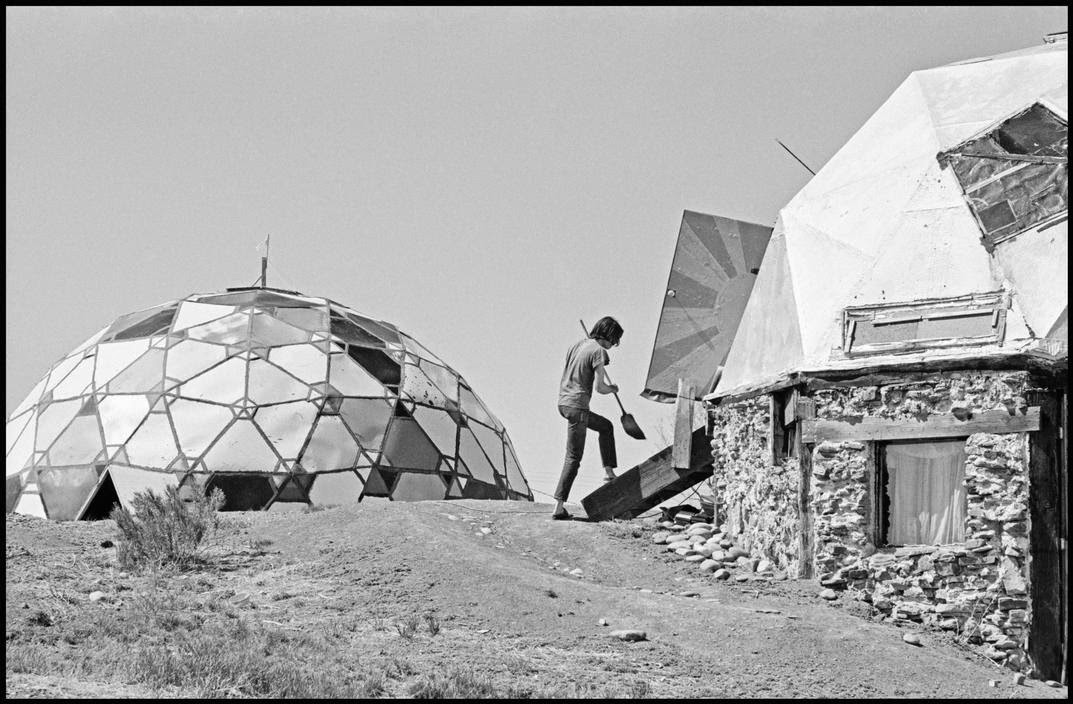
II_ Drop City, Colorado 1969.
Author: Denis Stock/Magnum Photos.
5. Peter Rabbit, 1971. Drop City, Preface p.2 “Community life is funky and guaranteed nitty-gritty, everyday dirt-grass-hot-cold-wet stuff”.
6. Peter Rabbit, 1971. Drop City, p. 156.
7. Peter Rabbit, 1971. Drop City, p. 67.
8. Peter Rabbit, 1971. Drop City, p. 151-152.
Escape complexity or embrace it.
Drop city eventually failed because they did not work around the government’s influence with radical strategies to cut ties with it and become self-sufficient. It was overall a standoff where the community would use to their advantage several social programs, it was chaotic and spontaneous. Perhaps with the building process, the community grew, and after the building of the domes finished the unifying purpose for survival froze. Then new people came popularity arose, tension grew, and the actual communal objectives lost long term clarity. Nick Srnicek and Alex Williams discuss in their book, Inventing The Future, how folk politics have failed to be a meaningful solution. The authors classify reductionist strategies as folk politics for the initiatives that have a "natural & intuitive" agendas as their critical approach. The main issue is that these social projects operate within the past century’s rigid & stagnate structures; thus, they are almost entirely useless and outdated. (Figure III) As government policies and political movements become outpaced by the increasing complexity of a technological revolution fuelled primarily by capitalist values (that are in constant evolution themselves), against it, policy and decision-making is slow, uninformed and more often than not, a power struggle. The most valuable concept to consider here is that knowledge that might be natural and intuitive is mostly a social construct of the present or near past. 9. Therefore, the thought that our intuitive critical thoughts are free from the influence of our current situation and the historical events leading to our time is very naive, furthermore it is quite evident that at the pace at which the world is evolving, it is increasingly difficult to make sense of it and take decisions by looking backwards.
Not to completely disregard folk politics, they are great turning points they mark but have to critically evolve them from a dis-controlled reaction to a conscious steer. They are the first push if we think of them as a starting point. Since folk politics tend to favour practices instead of long-term goals, they tend to pursue inherently fleeting activities with short-term rewards. This short-term view added to the local focus of this movements, represent some of the main flaws Inventing The Future begins to expose about folk politics and what makes them struggle to propose a significant change to the current forms of capitalism. 10.
A physical outcome needs to balance digital solutions.
The digital interface experience that mediates between us these days proves to be a pragmatic experiment exposing some critical failures. Digital platform moderation, not going into a discussion about business interest or ownership 11., naturally favours machine moderation instead of our own. In many cases, digital scalability favours eliminating human interaction and instead works with algorithms designed to make us behave as isolated experimental subjects. 12. Algorithms are better at processing tailored data feeds to us, maximising user attention by keeping us in a consistent and familiar environment. 13.
The digital network behaviour is not something that derives from the fundamental nature of algorithms and their scalability over influence these tools can achieve in behavioural patterns of any individual. They are modelled to respond mainly to the return of profit, security and control by those implementing & augmenting the network capacity monetise ever more aspects of life through lean platforms and low skill workers. (Figure IV) It is the “capitalist nature of investment and profit” 14., which is the fundamental force driving how we use and connect through the internet, and it is in constant evolution. There is a growing interest in understanding the policies that govern how we understand/use the value generated from data, and the leverage communities can gain thanks to open-access or decentralisation. Otherwise, any potential value can be extracted externally and manipulated for or against the community, with almost zero return.
9. Nick Srnicek, Alex Williams, D. 2015. Inventing the Future: Postcapitalism and a World Without Work, p.10
10. Nick Srnicek, Alex Williams, D. 2015. Inventing the Future: Postcapitalism and a World Without Work, p.15
11. Nick Srnicek, D. 2016. Platform Capitalism, p.86
12. Cade Metz for The New York Times, June 16, 2020. Riding Out Quarantine With a Chatbot Friend: 'I Feel Very Connected'. Source
13. Virginia Eubanks, Jan 2018. Automating Inequality: How High-Tech Tools Profile, Police and Punish the Poor (2018), The Digital Poorhouse from Automating Inequality, p. 194-195
"High-tech tools have a built-in authority and patina of objectivity that often lead us to believe that their decisions are less discriminatory than those made by humans. But bias is introduced through programming choices, data selection, and performance metrics."
14. Aaron Swartz, Jul 2008. Guerilla Open Access Manifesto, “there’s no justice in following unjust laws.” Source
A theoretical example: War and Architecture.
A great text to analyse and abstract concepts of is Lebbeus Woods, short text War and Architecture. This essay provides powerful visions of how architecture can protect and accommodate complex interactions in a commons infrastructure. Because of the architects' role being dominated by institutions and authority, modernist architecture has served as a tool for consolidating ideologies founded in hierarchies. He argues that Ideologies radicalise and polarise positions because of their core definition, and when society ceases to behave in classical deterministic ways, architecture ceases to represent the society it tries to define unilaterally.
A great text to analyse and abstract concepts of is Lebbeus Woods, short text War and Architecture. This essay provides powerful visions of how architecture can protect and accommodate complex interactions in a commons infrastructure. Because of the architects' role being dominated by institutions and authority, modernist architecture has served as a tool for consolidating ideologies founded in hierarchies. He argues that Ideologies radicalise and polarise positions because of their core definition, and when society ceases to behave in classical deterministic ways, architecture ceases to represent the society it tries to define unilaterally.
He calls for an architectural environment derived from more dynamic forms of knowledge. These new forms represent a re-structuralization of the domestic environment, enhanced by technological advancements that allow for more self-determined, self-organising systems. Technology also makes it possible for these systems not to be hierarchically dependent but assembled heterarchically, creating a levelled interaction field. 15. For him, fluids resemble this referred complexity of everyday life, malleable, turbulent, chaotic yet with an underlying logic. (Figure VI) Woods does not present this as a solution for everyone, similarly to the lifestyle of Drop City he frames this environment for a particular type of individual; as he puts it, “whoever wants or needs to transform their everyday patterns from fixed to fluid”. 16.
Architecture needs to change itself, to bring people together.
Lebbeus Woods’s text is a good example to rethink architecture’s purpose and reconsider the past’s influence, allowing us to see past the institutional conventions. Scaling down to an architecture that embodies the individual and the personal demands supper customisation and flexibility, back then for woods it was a graphic output, an intuition of what extreme connectivity and data sharing in “bits and bytes” would look like. He even went to say that this would become a new currency more valuable than gold,17. now we know a fair byte about that (blockchain), but what about the bits (as the parts of architecture)? Drop City and War And Architecture’s examples approach their strategy towards change and tipping the balance of power very differently; one fundamentally negates it and cast itself aside the other is combative and intrusive. However, both present harsh living conditions and specific users that make it the survival of the fittest. Now established technology such as AI, digital platforms, and alternative currencies could solve those conditions today. Then, how should the architectural space react to mass interaction, data and information platforms, should it synchronise or stand aside? (Figure VII)
The reality is that giving up on obtaining digital leverage, results in losing an asset that would be incredibly valuable if put to other uses other than profit and control. Therefore we have to start thinking, for example, how would we apply the search power of google the logistics and management of amazon, outside the scope of profit. As architects, we should draw those tools and knowledge from the digital platforms and strive for real-world applications that integrate the internet of things horizontally, gradually building a collaborative network of assets directly under the user’s control. One of the main challenges opposing that realisation is that in the same way, the network is hostage to monopolistic management derived from capital investment, the built environment is as well. The architectural profession needs to gain self-determination against its dependence on capital and balance a capitalistic focus with potential exchanges derived from labour in a commons network. Architects, especially those who operate in small scale practices, must learn to scale up laterally and collaborate. Only then regular architecture will outgrow its present situation, derived from being a commodity thus being speculated upon and most often not by the inhabitant. As of now, architecture cannot sync with a hypothetical commons society. It needs to become a conscious profession not driven by plots and developers, but by overarching schemes and informed by community necessities and solutions. In short, if architects cannot associate in a commons network themselves, they cannot aim to create any form of commons platform for others. 18. Maybe only then will the architecture profession be a bit less alienated, becoming a relevant source of solutions demanded by the commons built environment.
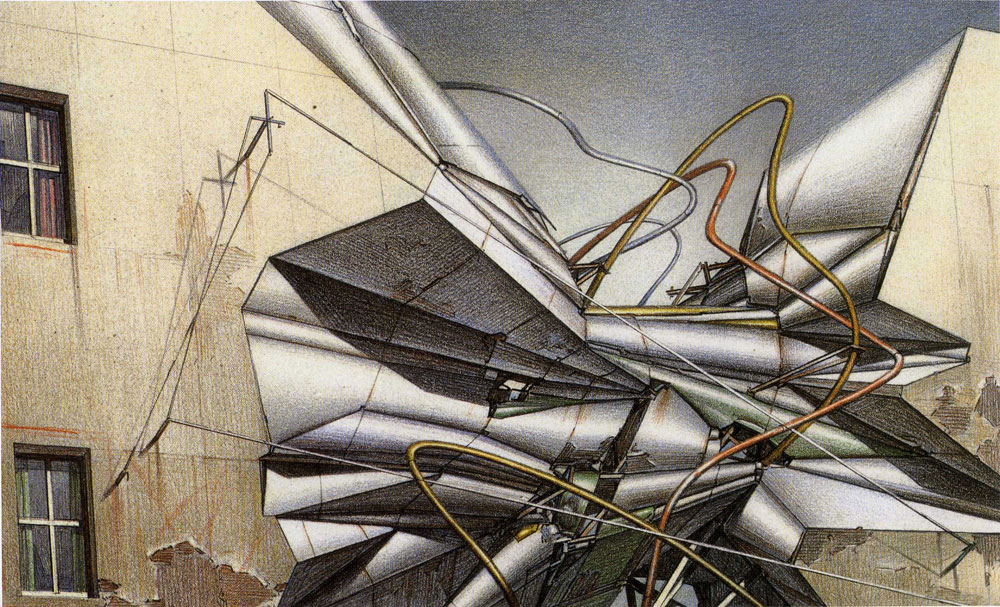
VI_SCAR Construction, War and Architecture.
Author Lebbeus Woods.
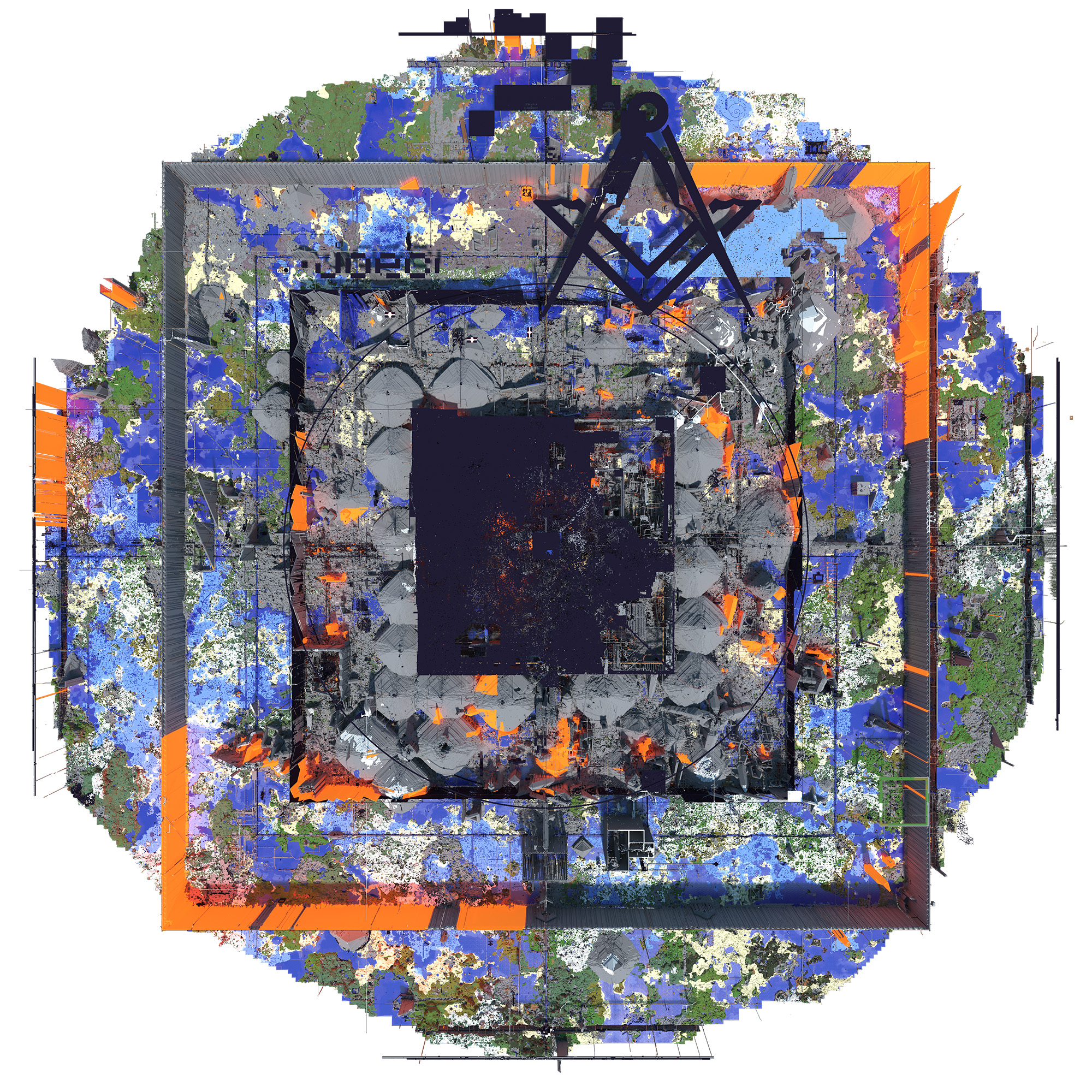
VII_2B2T Anarchy Minecraft Server
Author IronException.
using the program Chunky licensed under GNU General Public License, version 3.
Author IronException.
using the program Chunky licensed under GNU General Public License, version 3.
15. Pamphlet Architecture Issue15 War and Architecture, Lebbeus woods, Princeton Architectural Press 1993, p.6 and 8
16. Pamphlet Architecture Issue15 War and Architecture, Lebbeus woods, Princeton Architectural Press 1993, p.32
17. Pamphlet Architecture Issue15 War and Architecture, Lebbeus woods, Princeton Architectural Press 1993, p.36
18. Peggy Deamer, 2020. Architecture and Labor, P133 Architectural Cooperativization
Commons in everyday life, working and trading space with others.
As online work is expanding through many professions, our neighbourhoods are becoming the starting point of this potential lifestyle revolution. Finding new ways to cooperate in this “neighbourhood office” could uncover new potential community projects that are only possible through shared experiences and diverse backgrounds of the people present (Figure VIII). Also, local association is critical if there is still a dependency on external capital as the primary form of income for each individual. 19. Working towards having more time to invest in labour activities and generate a collective value around it is crucial to gain leverage against the potential abuses of capitalism entering the domestic environment. A collective effort is necessary to resist, and correct potential exploitation and abuse situations from employers with external interests. Many movements are starting to develop a counterculture with exciting proposals and defying the current system.20. Architects also have to assemble into a relevant counterculture to challenge our organisational frameworks. 21.
Going forward, we need to start devising strategies to revert the way architecture is hostage to speculation and land value and facilitating access to housing independently from the location. Decision and purchasing power of space have come down to the user, and now thanks to costs narrowing down with new technological and fabrication methods 22., it is becoming a possibility. We have promising paths to achieve this, one of them, the discretisation of architecture. This strategy can enable a user to obtain ownership over its personal spaces and engage with other peers building their own space through their shared assets. Furthermore, it is a strategy that can make architecture tradable from plot to plot. In making space a currency that can be exchanged and transferred, users would ultimately establish a correlation between space and their data signature. A signature that can contain an array of factors that vary in different time frames, for example location-hourly, travelling-monthly or family status-yearly. Some prospects predict the necessity to build around two billion homes in the next eighty years,23. however, how many homes that are already built stand vacant, or become too big or too small in fluctuating demographic conditions. If there is such a high demand for housing, one of the first ways to start optimising, is by eliminating null spaces. If architectural parts can allow people to pay for only the space they want when they need it, to latter feed it back into a material reserve, this would be a great start to not overdoing this housing demand.
Discretizing the architectural space as “bits” transferable as “bytes”, is making architecture “not a big deal” (temporarily speaking), which in return, could make spaces more use/user conscious, more efficient, less wasteful and more collaborative. By responding to the housing demand with a just in time approach requires of the building matter to become intelligent and collaborative which is especially relevant as we see the construction footprint of failed developments litter the earth surface, and it is not hard to understand why it is one of the most contaminant industries on earth.
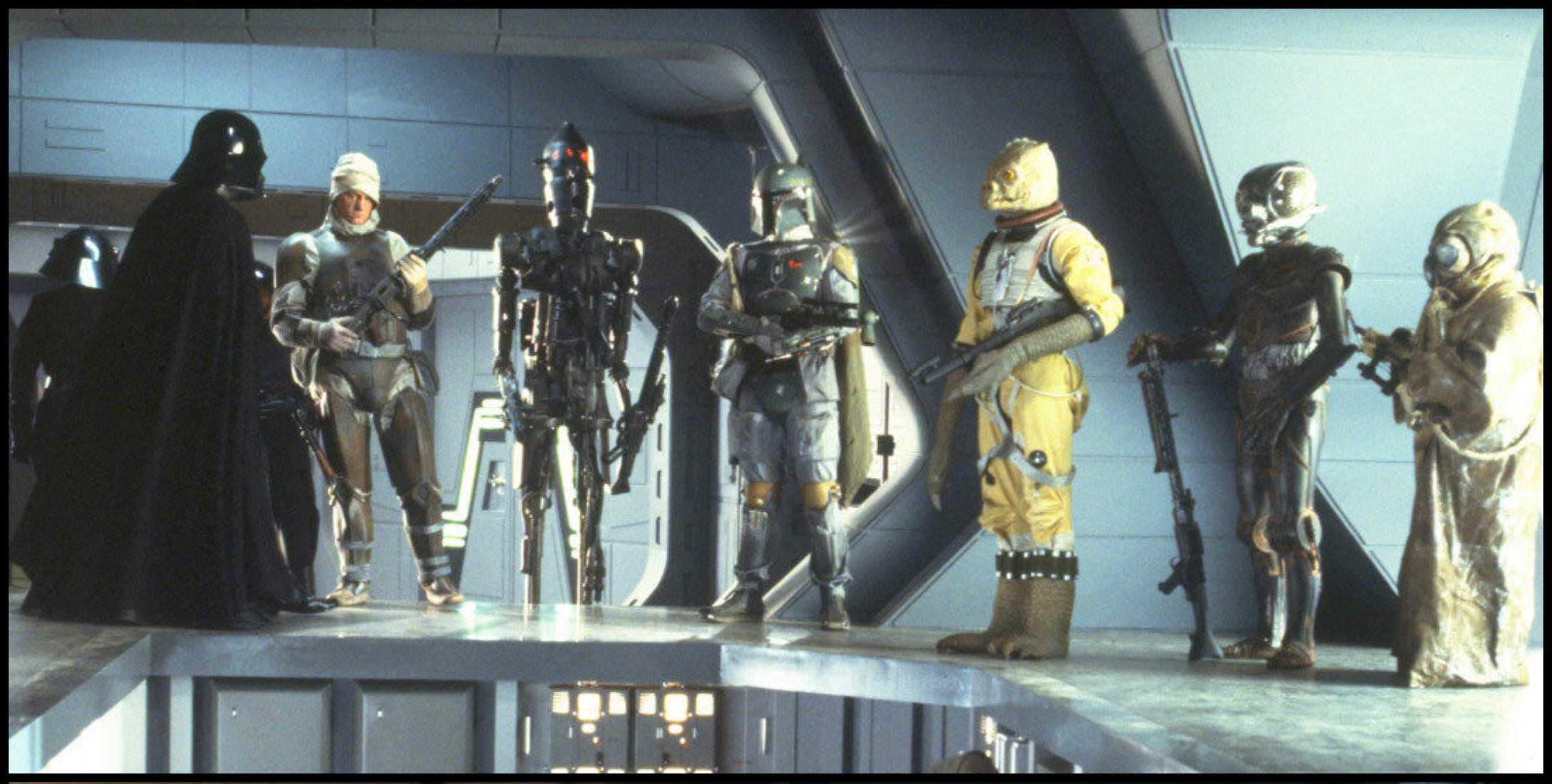
VIII_Star Wars Episode V, The Empire Strikes Back 1980.
Bounty Hunters.
Bounty Hunters.
19. Guido Ruivenkamp & Andy Hilton, Sep. 2017. Perspectives on Commoning Autonomist Principles and Practices, p.237-247.
20. Extinction Rebellion UK, November 04, 2020. Source
21. Peggy Deamer, 2020. Architecture and Labor, P68 Architectural Cooperativization
22. Geoffrey G Parker, Marshall Van Alstyne, and Sangeet Paul Choudary,
Platform Revolution: How Networked Markets Are Transforming the Economy - And How to Make Them Work for You
23. World Economic Forum, Mar. 2018. The world needs to build 2 billion new homes over the next 80 years. Source
Bibliography.
Rosi Braidotti, 2019Posthuman Knowledge
Editor: Polity press.
Nick Srnicek, D. 2016.
Platform Capitalism.
Editor: John Wiley & Sons.
Nick Srnicek & Alex Williams, 2015.
Inventing the Future: Postcapitalism and a World Without Work.
Editor: Verso Books.
Virginia Eubanks, Jan. 2018.
Automating Inequality: How High-Tech Tools Profile, Police and Punish the Poor.
Editor: St Martin's Press.
Geoffrey G Parker, Marshall Van Alstyne and Sangeet Paul Choudary, F. 2016.
Platform Revolution: How Networked Markets Are Transforming the Economy - And How to Make Them Work for You.
Editor: W. W. Norton & Company.
Peggy Deamer, A. 2020.
Architecture and Labor.
Editor: Routledge.
Guido Ruivenkamp, Andy Hilton, S. 2017.
Perspectives on Commoning Autonomist Principles and Practices. Zed Books Ltd.
Editor: Routledge.
Lebbeus Woods, D. 1993.
Pamphlet Architecture 15 War and Architecture.
Editor: Princeton Architectural Press.
Peter Rabbit, 1971.
Drop City.
Editor: Olympia Press.

